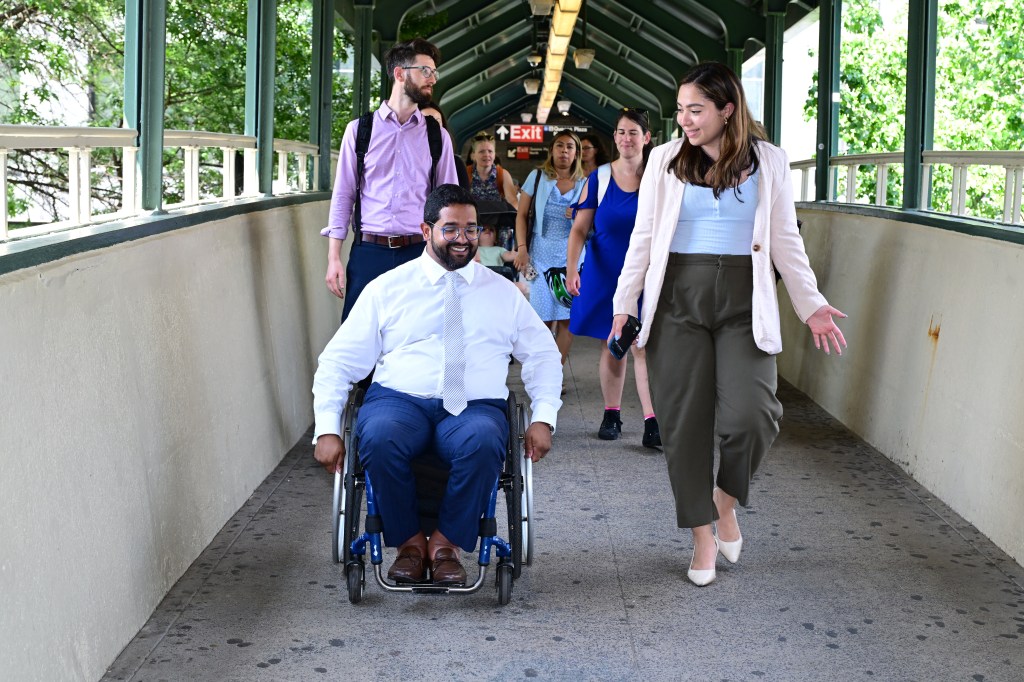By Philip Newman
World War II was over.
The Tuskegee Airmen had finished their mission of shooting down Nazi planes and now they, like most of the 16 million Americans who took up arms, needed jobs.
But coming home meant not only plaudits from a grateful nation, but the reality of an all-too-familiar adversary for these African-American war heroes: racial bigotry from many employers.
But in New York City, a dozen of the Tuskegee Airmen were eventually hired by the New York transit system.
These 12 African Americans were honored Friday by the Metropolitan Transportation Authority, which renamed the 100th Street Bus Depot on Lexington Avenue in Manhattan the Tuskegee Airmen Bus Depot.
A newly installed bronze commemorative plaque in the depot’s entryway lists the names of the 12 Tuskegee Airmen who joined the transit system. The emblem also includes a rendering of the red-tail fighter planes they flew.
“The Tuskegee Airmen overcame so much to become one of the most highly respected fighter groups of the war, thanks to the numerous civil rights organizations that convinced the Army to create this iconic African-American pursuit squadron,” said MTA Chairman Joseph Lhota. “These heroes included pilots, navigators, bombardiers, maintenance and support staff.”
Those honored were Reginald Brewster, Victor Collymore, Conrad DeSandies, Harry Dickenson, John Freeman, Noel Harris, Oscar Hawkins, Austin McKenzie, Maury Reid Jr., Percy Sutton, Victor Terrlonge and Fred Wilson.
Only Brewster and Harris survive. An MTA official sounded a bell for each of the deceased.
Sutton was a subway conductor, among other transit jobs, and was elected Manhattan borough president.
Brewster asked that “each and every one of you to be proud that you are able to live in a country of freedom, where the ability to forge ahead is limited only by your determination to forge ahead.”
He got a standing ovation from the crowd.
The only other surviving Tuskegee Airman transit worker, Noel Harris, was ill and could not attend the ceremony.
Roscoe Brown Jr., 90, who was not a transit employee, was among the speakers at the rededication. Brown, who arrived with his daughter Doris Bodine, of Cambria Heights, was commander of the 100th Fighter Squadron of the 332nd Fighter Group.
Brown was one of 15 pilots who, on March 25, 1945, shot down German Messerschmidt 262s, the only jet planes of World War II.
Speaking of conditions just after the war, Brown said, “You can’t understand how segregated this country was. People would look you in the face and say, ‘We don’t hire Negroes here.’”
Brown later was a professor at New York University and president of Bronx Community College.
Some former Tuskegee Airmen wore their military uniforms, including Julius Freeman, of Springfield Gardens. He handed out cards bearing his phone number in his capacity of keeping track of surviving members.
During World War II, the armed forces were racially segregated, with most black personnel sent to labor battalions and other support units and kitchen personnel in the Navy.
President Harry Truman abolished segregation in the military in 1948.
A visit to Tuskegee, Ala., by first lady Eleanor Roosevelt in 1941 is believed to have heavily influenced a decision by President Franklin Roosevelt to order the formation of an African-American unit in the Army Air Corps. The college provided flight training in a contract with the Tuskegee Institute.
By war’s end, the training program produced 996 pilots, 450 of whom served in combat and more than 15,000 ground crewmembers for the Tuskegee Airmen, who were awarded 150 Distinguished Flying Crosses for valor.
The Tuskegee Airmen lost 66 of its members killed in action and 33 become prisoners of war. The organization’s main function was flying North American P-51 Mustang fighter planes to escort U.S. bombers, such as B-17s, in raids on German cities.
Reach contributing writer Philip Newman by e-mail at timesledgernews@cnglocal.com or phone at 718-260-4536.




































